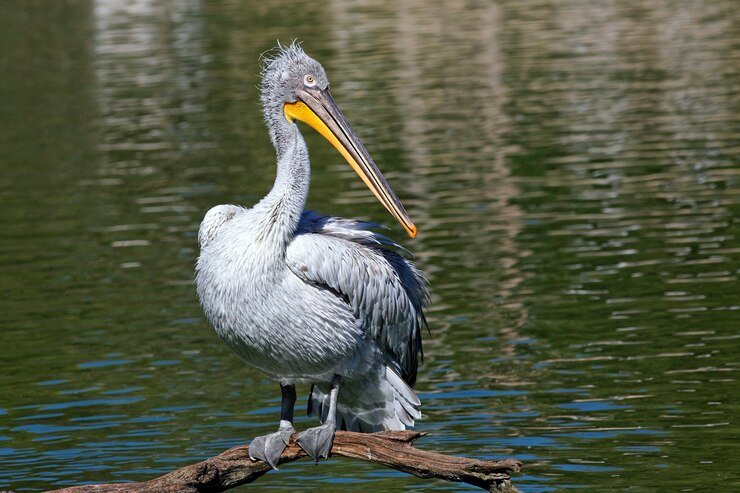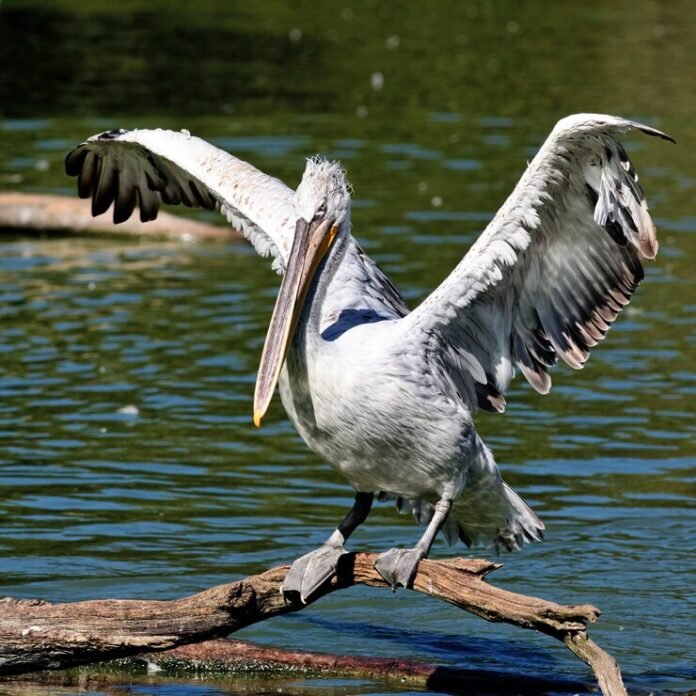Introduction to Pelicans
Pelicans are some of the most intriguing and recognizable birds you can find along coastlines and rivers. Their large size, distinctive bills, and graceful flight patterns make them a favorite among birdwatchers and wildlife enthusiasts. In this blog post, we will take a deep dive into the world of pelicans, exploring their natural habitat, various species, behavior, and importance in the ecosystem. Whether you’re a coastal resident, an avid birder, or someone fascinated by wildlife, there’s something here for you.
Types of Pelicans
Pelicans belong to the family Pelecanidae and are known for their long beaks and large throat pouches used for catching fish. There are eight different species of pelicans, each with unique characteristics. The American White Pelican is found in North America and is known for its striking white feathers and black wingtips. The Brown Pelican, commonly seen along the southern coasts of the United States, is smaller and more agile. The Dalmatian Pelican, one of the largest species, is found in Europe and Asia. Each species has adapted to its environment in fascinating ways, making pelicans a diverse and interesting group of birds.
Pelican Behavior
Pelicans are social birds often found in flocks. They are known for their cooperative feeding behavior, where groups of pelicans work together to herd fish into shallow waters before scooping them up in their large beaks. Nesting is another communal activity, with pelicans building nests in colonies on islands or secluded shores. These birds are also migratory, traveling long distances between breeding and feeding grounds. Their migration patterns are influenced by food availability and climate conditions, making them an essential part of the ecosystem wherever they go.

The Importance of Pelicans
Pelicans play a crucial role in their ecosystems by helping to control fish populations and contributing to the biodiversity of their habitats. However, many pelican species are facing threats due to habitat destruction, pollution, and climate change. Conservation efforts are vital to protect these birds and ensure their survival. Organizations around the world are working to preserve pelican habitats and raise awareness about the challenges these magnificent birds face.
Best Places to Spot Pelicans
If you’re keen to see pelicans in their natural habitat, there are several hotspots you should consider visiting. Along the Gulf Coast of the United States, places like Louisiana’s Grand Isle and Florida’s Everglades National Park offer excellent opportunities for pelican watching. The Salton Sea in California is another popular spot, especially for the American White Pelican. Internationally, the Danube Delta in Romania and the lakes of Tanzania are famous for their large pelican populations. These locations provide not only stunning views of pelicans but also a chance to observe their behaviors up close.
Tips for Birdwatchers
Birdwatching can be an incredibly rewarding hobby, especially when it comes to observing pelicans. Here are some tips to help you make the most of your pelican-watching experience. First, invest in a good pair of binoculars to get a closer look at these majestic birds without disturbing them. Secondly, research the best times of year and specific locations to see pelicans in your area. Early mornings and late afternoons are often the best times to catch them feeding. Lastly, always respect wildlife and their habitats by keeping a safe distance and avoiding any actions that might disturb the birds.
Pelicans in Culture
Pelicans have captured the human imagination for centuries and have been featured in various aspects of culture and folklore. In many coastal communities, pelicans are seen as symbols of resourcefulness and teamwork. They have been depicted in art, literature, and even on currency in some countries. Conservation groups often use pelicans in their campaigns to highlight the importance of protecting coastal and marine environments. Understanding the cultural significance of pelicans can deepen our appreciation for these remarkable birds and inspire us to take action to protect them.
Conclusion
Pelicans are more than just fascinating birds; they are vital components of our ecosystems and cultural heritage. By learning more about their behavior, habitats, and the challenges they face, we can better appreciate their importance and the need to protect them. Whether you’re a seasoned birdwatcher or a curious beginner, there’s always something new to discover about pelicans. Take a moment to enjoy their beauty and contribute to conservation efforts to ensure that future generations can continue to marvel at these incredible birds. Visit our website to learn more and get involved in pelican conservation today.



